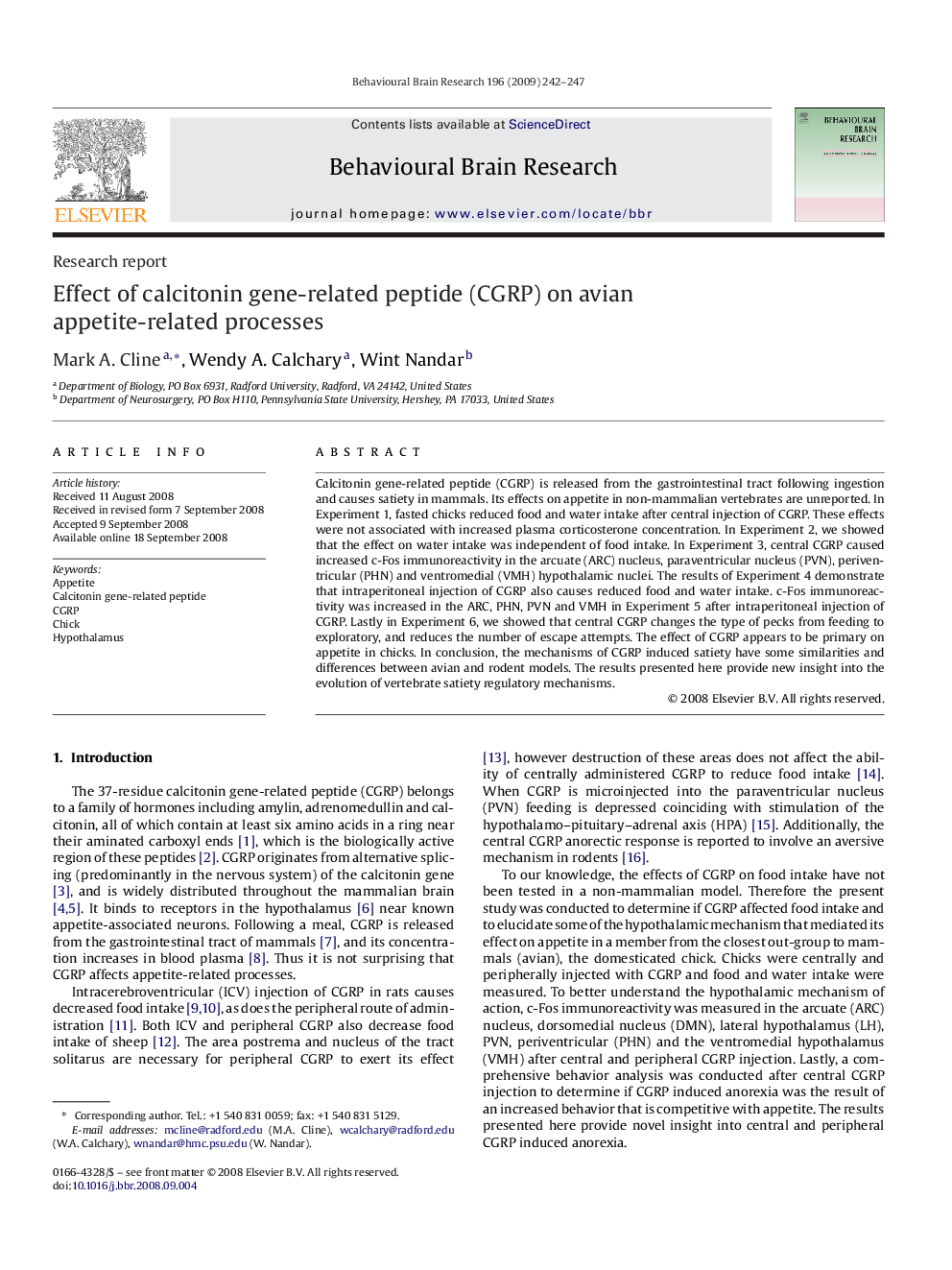| Article ID | Journal | Published Year | Pages | File Type |
|---|---|---|---|---|
| 4315119 | Behavioural Brain Research | 2009 | 6 Pages |
Calcitonin gene-related peptide (CGRP) is released from the gastrointestinal tract following ingestion and causes satiety in mammals. Its effects on appetite in non-mammalian vertebrates are unreported. In Experiment 1, fasted chicks reduced food and water intake after central injection of CGRP. These effects were not associated with increased plasma corticosterone concentration. In Experiment 2, we showed that the effect on water intake was independent of food intake. In Experiment 3, central CGRP caused increased c-Fos immunoreactivity in the arcuate (ARC) nucleus, paraventricular nucleus (PVN), periventricular (PHN) and ventromedial (VMH) hypothalamic nuclei. The results of Experiment 4 demonstrate that intraperitoneal injection of CGRP also causes reduced food and water intake. c-Fos immunoreactivity was increased in the ARC, PHN, PVN and VMH in Experiment 5 after intraperitoneal injection of CGRP. Lastly in Experiment 6, we showed that central CGRP changes the type of pecks from feeding to exploratory, and reduces the number of escape attempts. The effect of CGRP appears to be primary on appetite in chicks. In conclusion, the mechanisms of CGRP induced satiety have some similarities and differences between avian and rodent models. The results presented here provide new insight into the evolution of vertebrate satiety regulatory mechanisms.
